
Whether you’re an avid hiker or casual outdoor enthusiast, you’ve likely come across the popular European outdoor brands Jack Wolfskin and Mammut.
The German, Jack Wolfskin, and the Swiss, Mammut, have been making quality outdoor equipment for decades and have loyal followings. However, for those new to the scene, it can be difficult to determine which brand is a better fit.
Today, in this article, we’ll explore their histories, we’ll look at the types of products they’re known for, and we’ll explore their materials, prices, and sustainability practices.
By learning more about the strengths of each brand, you can make the right choice for your next purchase.
Our goal is not to say one is definitively better, but to provide information to help you select the brand that best suits your needs, budget, and design preferences.
Contents:
1. Jack Wolfskin Outdoor Gear
History of the Brand
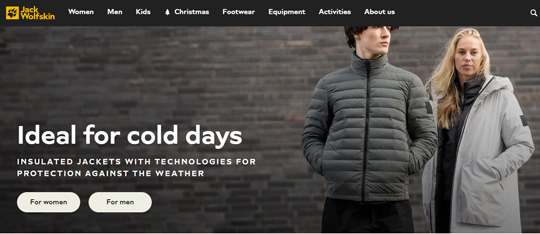
Jack Wolfskin official website
Jack Wolfskin, a well-known German brand established by Ulrich Dausien in 1981 in Frankfurt, has gained huge popularity, especially in Europe.
Since 1997, the company has been headquartered in Idstein, Germany. Over time, it has evolved into one of the leading outdoor brands in Germany, offering a diverse range of products and gaining popularity in various other countries.
Today, the brand provides a wide array of gear for outdoor activities, encompassing clothing, shoes, tents, sleeping bags, backpacks, and more.
Jack Wolfskin has long been committed to sustainability, environmental protection, and social responsibility, aligning with the ethos of many other outdoor apparel and equipment brands. This dedication is evident in its products, making it a commendable model of a conscientious enterprise.
The company’s style and performance appeal to both individuals seeking high-quality casual wear and those in search of technical outdoor gear.
Don’t miss:
9 German Jackets and Outdoor Clothing Brands that You’ll Love
7 German Hiking and Winter Boot Brands: Our Top Picks
Materials, Fabrics, and Production Process
Polyester is a material that is used in large quantities in the production of outdoor gear. Jack Wolfskin is a brand that prioritizes its environmental impact and incorporates recycled polyester into its products whenever feasible.
It is essential to have suitable insulation options for your clothing, which is why Jack Wolfskin utilizes a mix of natural and synthetic materials for insulation, such as RDS-certified Natural Down, PrimaLoft (synthetic), Microguard (synthetic), and Fibercloud (synthetic).
In terms of fabric technologies, Jack Wolfskin employs Texapore in its coats and sports apparel. Texapore is a windproof, breathable, and waterproof fabric that is also water-resistant and snow-friendly.
This fabric is offered in various construction options and protection levels to accommodate a variety of activities.
The video will be loaded from YouTube.com, a third party. If you play it, you accept their terms of service, and their use of cookies.
Read also:
Jack Wolfskin vs The North Face Outdoor Gear: A Comparison
Jack Wolfskin vs Patagonia: Which is Better for Outdoor Clothing?
Where is Jack Wolfskin’s outdoor gear made?
Products offered by Jack Wolfskin are made in both European and Asian countries. Their production facilities are distributed across various Asian countries such as Vietnam, China, Bangladesh, and South Korea. In Europe, they have a presence in Germany, Slovenia, Turkey, and Italy. The raw materials utilized are sourced from Europe, the United States, and Asia. (source)
Recommended Products
Jack Wolfskin Troposphere Men’s Insulated Jacket
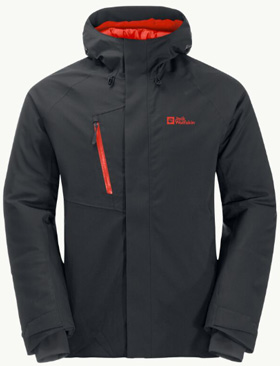
Image: jack-wolfskin.com
Check it out at Jack-Wolfskin.com
The Jack Wolfskin Troposphere represents a traditional and simple yet extremely practical and flexible insulated hardshell jacket.
It incorporates a Texapore Pro fabric that delivers exceptional windproof, waterproof, and breathable properties, safeguarding against the elements while enabling the release of excess heat and moisture, improving freedom of movement.
This jacket is equipped with PrimaLoft Black Rise insulation, a moisture-resistant recycled synthetic fiber fill that offers warmth in cold conditions. It’s made with three outer pockets and one internal pocket to securely accommodate small belongings.
The use of recycled materials shows the company’s commitment to environmental protection in manufacturing. Designed with technical materials and insulation, the Troposphere is tailored for active outdoor use in cold and damp conditions.
Jack Wolfskin Highland Trail 50+5 Women’s Trekking Pack
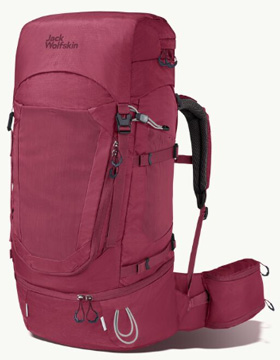
Image: jack-wolfskin.com
Check it out at Jack-Wolfskin.com
The Highland Trail 50+5 Backpack is specifically crafted for women, providing a tailored fit and women-specific elements. Boasting a 50+5 liter capacity, it delivers ample storage for extended excursions.
The backpack incorporates a height-adjustable X-Transition back system, ensuring comfort, effective ventilation, and optimized load transfer to facilitate the carrying of heavy loads. Its dual access to the main compartment enables versatile packing and gear retrieval from both the top and front zipper.
Additionally, the extended zipper on the lid pocket allows for swift access to items. A generously-sized elasticated mesh front pocket serves as a convenient spot to stow your jacket. The waist belt features a pocket for holding a water bottle, and the pack is also capable of accommodating a hydration bladder.
Crafted from recycled materials, this product is designed for sustainability as a PFC-free and bluesign-certified trekking pack.
Prices
A lot of gear from Jack Wolfskin is affordably priced. This company offers numerous options for budget-conscious shoppers to complete their outdoor gear selection.
However, it’s worth noting that Jack Wolfskin’s pricing varies, with their jackets ranging from $60 to $500, backpacks from $50 to $400, and footwear from $60 to $230.
Are Jack Wolfskin products worth the price?
We think their jackets, clothing, and other gear are a good investment. If you want superior gear with a good quality-to-cost ratio, Jack Wolfskin can be relied upon, as they are famous for their use of premium materials and innovative technology.
Read next: 8 German Backpack Brands that You’ll Love
2. Mammut Outdoor Gear
History of the Brand
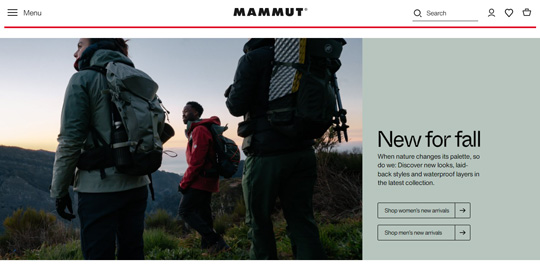
Mammut official website
Mammut, a famous player in the outdoor apparel sector, is headquartered in Switzerland and traces its origins back to 1862 when Kaspar Tanner established his ropeworks.
Evolving from a rope-manufacturing enterprise, Mammut has expanded into a global leader in the clothing industry. Despite its 160-year history, Mammut continues employing advanced rope production techniques, contributing substantially to its overall revenue.
Alongside ropes, Mammut’s product lineup encompasses jackets, backpacks, hardshells, fleece jackets, softshell pants, rain pants, backpacks, and shoes.
The Swiss company places a strong focus on sustainability, incorporating high-quality materials in both apparel and rope manufacturing to align with its core values.
Don’t miss:
8 Outdoor Brands like Mammut: Our Best Alternatives
7 Swiss Jacket and Outdoor Clothing Brands: Our Favorites
Materials, Fabrics, and Production Process
Mammut places a strong emphasis on sustainability and upholds the Bluesign® standard for its product line. The company integrates eco-friendly methods and programs into its operations and exercises caution in its manufacturing processes.
An example is the repurposing of used outdoor equipment, along with active efforts to phase out PFCs (perfluorinated and polyfluorinated chemicals). Additionally, Mammut opposes animal cruelty and adopts animal-friendly techniques, reflecting its ethical stance and commitment to sustainable principles.
In rope production, the company utilizes materials with a minimized carbon footprint, and its apparel adheres to the standards established by the Fair Wear Foundation.
Some of Mammut’s offerings incorporate Gore-Tex, a renowned and high-quality waterproof and breathable fabric technology.
Mammut’s unwavering dedication to sustainable practices positions it as an exceptional option for environmentally-conscious outdoor enthusiasts.
Other materials and fabric technologies used by Mammut include nylon, polyester, Mammut DRYtechnology™ waterproof and breathable membrane, Pertex® Quantum® Pro water-resistant and breathable fabric, PrimaLoft® Black synthetic insulation, goose down insulation, and more.
The video will be loaded from YouTube.com, a third party. If you play it, you accept their terms of service, and their use of cookies.
Read also: Mammut vs Arc’teryx Outdoor Gear: A Comparison
Where is Mammut outdoor gear made?
Mammut manufactures most of its outdoor gear in Asian nations, such as Vietnam, China, and Bangladesh.
Recommended Products
Mammut Nordwand Advanced HS Hooded Men’s Jacket
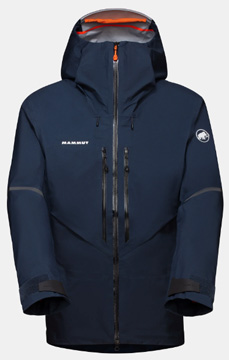
Image: mammut.com
Check it out at Mammut.com
The Nordwand Advanced hardshell jacket represents the ultimate all-purpose option for mountain expeditions, offering essential attributes to enhance your alpine activities. Its lightweight, resilient, and breathable nature is attributed to the pioneering design and application of GORE-TEX® PRO fabric technology.
This jacket ensures enduring and trustworthy defense against the elements, coupled with exceptional breathability, achieving an optimal fusion of characteristics, safeguarding, and compactness. For individuals in search of an exceptional alpine jacket, the Nordwand Advanced HS stands as a top selection.
Mammut Trion Nordwand 28 Backpack
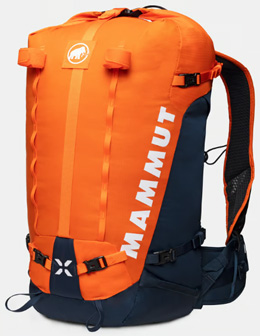
Image: mammut.com
Check it out at Mammut.com
Mammut’s Eiger Extreme Collection showcases the Trion Nordwand 28, an adaptable and resilient alpine backpack. Crafted from premium Cordura material, this backpack offers a blend of lightweight portability and long-lasting sturdiness.
Its design prioritizes not only durability but also exceptional comfort. Renowned athletes such as Dani Arnold, Nico Hojac, and Stephan Siegrist have lent their expertise and experience to the development of this backpack.
The Trion Nordwand 28 caters to high-performance individuals who have high standards for their gear. Whether tackling mountain ascents or challenging hikes, this backpack is a great choice.
Prices
Mammut offers a large list of products suitable for individuals with different financial means, ensuring accessibility to a diverse consumer base. Their product line includes both budget-friendly options and higher-priced items featuring advanced technology and offering high performance.
Specifically, Mammut’s jackets typically range from $200 to $300, with select technical designs priced at $900 and above, while their backpacks are available at prices ranging from $70 to $800.
Are Mammut products worth the price?
The increased cost reflects the use of premium materials and cutting-edge technology. With a history spanning over 160 years, Mammut has established itself as a producer of outstanding outdoor gear.
We believe that Mammut’s outdoor equipment is worth it, given the superior quality and long-lasting nature of the products, making them a valuable choice for those pursuing the best performance.
Must read: 9 High-End, Expensive Hiking Brands for Clothing and Footwear
3. Which is Better? Jack Wolfskin or Mammut?
Both Mammut and Jack Wolfskin are great outdoor gear brands. Here are a few things to keep in mind that will help with your choice:
Mammut is known for its technical mountaineering and snowsports gear. It focuses on safety, durability, and performance for demanding alpine conditions. Mammut products usually are on the heavier, more rugged side.
Jack Wolfskin offers a wider range of outdoor clothing, gear, and accessories for activities like hiking, camping, etc., not just technical climbing. In general, Jack Wolfskin is more versatile for casual outdoor use in varying weather conditions.
As for quality, both brands use high-quality materials and manufacturing. In our opinion, Mammut has an edge for gear meant for serious alpine and mountaineering use where safety factors are critical.
When it comes to price, Mammut is more expensive as it caters to expert mountaineers. Jack Wolfskin offers more affordable options that still provide good value for casual and recreational outdoor use.
Style-wise, Jack Wolfskin has more classic designs with simple, essential lines compared to Mammut’s modern look.
In the end, for serious technical climbing and snowsports, we’d choose Mammut. For casual outdoor use in varied conditions, Jack Wolfskin offers more versatility and value at a lower price. In general, you can’t go wrong with either brand, depending on your intended use.
Read next: 11 European Brands for Outdoor Enthusiasts: Our Top Picks
